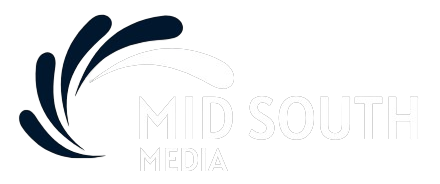
When Gov. Sarah Sanders debuted Arkansas LEARNS in 2023, she played up the school choice angle of her education legislation package. With state-funded school vouchers, she said, students will be able to go to any school they want. “Our new education freedom accounts allow parents to enroll their kids in whatever school is most appropriate for their family, whether it be public, private, parochial or homeschool,” Sanders proclaimed.
This theme carried through in the state’s first voucher report, where the primary core objective listed was to “Empower parents to make the best school choice for their child.”
When the governor introduced the 2025-2026 budget in November, the state Department of Education reported that interest in the novel voucher program was powerful. “This strong participation is a testament to the power of school choice in Arkansas,” their website said.
Here’s the fallacy of all of that: The huge majority of folks claiming these publicly funded vouchers have not made a novel choice. They chose private or homeschool long before LEARNS was passed. About 82% of students who received vouchers in 2024-2025 just kept attending the same private or homeschool they had already attended the year before. The only difference is that now, the state of Arkansas pays some or all of the costs. Only 5% of voucher recipients for the 2024-25 school year left a customary public school to try their luck elsewhere. Wow.
As the Legislature prepares to reconvene in Little Rock to consider the state budget, here are some essential calculations on just how much school vouchers will cost us in coming years.
In 2024-2025, the state will spend about $90 million for 14,000 or so vouchers, which is roughly $6,429 per voucher. (If you wonder why the total is not exactly 90% of foundation funding, or $6,993.90, it is because a student who leaves a customary public school lowers the amount of money the state pays to that school.)
Based on the state’s numbers from 2023-2024, 82% of the “Education Freedom Accounts” awarded in the first year went to families who had already made their choices about where their children would attend school. Among them, only 5% left customary public schools in favor of private, parochial or homeschool options. We don’t know if many of the other 13% or so of the recipients were headed to private schools, with or without a voucher.
This number is going to explode, and explode swift, because for 2025-2026, there are no restrictions on who can get a voucher, and the value of a voucher will go up from $6,993.00 to $7,533.00 if the foundation funding recommendation of the House and Senate education committees is enacted.
For 2025-2026, the governor budgeted $187.7 million for vouchers, but the actual cost will almost surely be much more. That is why the governor allocated $90 million more from state surplus reserves for vouchers next fiscal year. The supposition is that the total spend in 2025-2026 will be up to $280 million.
Even at $280 million in actual costs for 2025-2026, I think the governor’s proposed voucher budget is low in the long run. As the voucher program ramps up, the costs will skyrocket.
I make the following calculations based on a few assumptions: Over the next several years, most homeschoolers and private school students will ultimately get vouchers. And my conservative assumption is that the voucher program will not significantly influence school choice. Some parents who prefer private schools will end up in private schools because the subsidy might make the choice affordable, but as the voucher program becomes universal, the overall number of students with vouchers will approximate the current number of private school and homeschool students in Arkansas. Some homeschoolers may migrate to private schools, but that does not impact the overall cost.
In 2023-2024, the Arkansas Department of Elementary and Secondary Education website reported that Arkansas had 32,767 homeschool students. That number may shrink a bit, if more and smaller private schools pop up in rural areas. If 90% of these students obtain vouchers, the state will be spending about $222 million per year on vouchers for homeschoolers or former homeschoolers who elect to go to a private school because of the voucher program.
Most private school students will ultimately elect to get a voucher. The Arkansas Nonpublic School Association reports its member schools had 21,240 students in 2023-2024. If 90% of them get vouchers, this will be another $144 million expense for the state.
Assuming this 90% participation rate among non-public school students, this will push the total annual cost after ramp-up to about $366 million, adjusted upward each year as the state’s foundation funding increases. I don’t think it will take most homeschoolers and private school attendees very long to take advantage of the subsidy, although it will probably not all occur until fiscal year 2026-2027.
The state’s data for the 2023-2024 school year indicates 1,664 vouchers went to kindergarten students. If this same number of kindergartners claim vouchers each year going forward, there will be about 21,600 voucher recipients as those students move through the system and novel enrollees follow them at the same pace. If you do that math, and assume the 1,664 number includes about 5% of potential homeschoolers who went private, Arkansas will be spending well over $400 million on vouchers annually by 2026-2027.
These are just estimates, but other states are finding that they grossly underestimated the costs of their voucher programs. I don’t think Arkansas will be any different.
Another engaging cocktail party factoid is the amount of subsidy a family would receive if that family has three kids, with the first starting private school next year and the others starting every other year thereafter. Over the course of the next 17 years, assuming 3% annual increases in the voucher amount, that family would receive a subsidy of $365,557.68. Ding, ding, ding!!!!!
The irony of this is that about 75% of the families getting the massive subsidies are in Central and Northwest Arkansas, not out in rural areas. The state Legislature has subsidized the wealthiest parts of the state with hundreds of millions of dollars. Can you imagine paying state income taxes and local property taxes in a smaller town or rural area to fund your local school district, while the state is refunding private school tuition to families in Little Rock, North Little Rock, Fayetteville, Springdale, Bentonville and Rogers?
Does returning tax money to people in the wealthiest parts of the state make sense when the poorest parts of the state are falling further and further behind? Is this just another tax cut mostly for the luxurious, disguised as an “Education Freedom Account”?
Here’s perhaps the ultimate contradiction: The Arkansas Department of Education is telling us that it is revolutionizing education in Arkansas. How so? By turning the responsibility of educating students over to largely unregulated private schools, homeschools and education companies that promote all sorts of silly programs. Basically, the state is saying things will be better if it just gets out of the way.
These same scenarios are playing out in other states that have accumulated a few years of experience with their voucher programs. Arkansas copied the Arizona program. In that state, initial cost estimates were off by a factor of eight and blew up the state budget. In these other states, as in Arkansas, most vouchers are being claimed by students who already attended private schools.
We were baited and switched. The bait was school choice. The switch was a complicated wealth transfer to parents in the richest parts of the state whose children opted out of customary public schools long ago.
Sanders was correct when she said, while announcing her proposed 2025-26 budget, that budgets reveal our priorities. Transferring wealth from penniless and rural areas to subsidize private school tuition and homeschool costs for wealthier, more urban communities doesn’t seem like the right priority to me.
In part 2, I will look at the funding priorities for prisons, maternal health, higher education and economic development.

